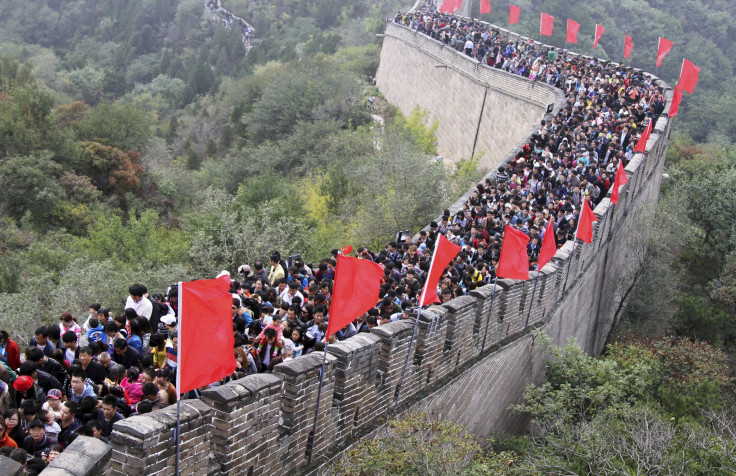China's Great Wall Crumbling Due To Weather, Tourism And Theft: Report

About 30 percent of the Great Wall of China has disappeared due to a combination of natural elements and human activity, which includes people stealing the wall’s bricks to build houses and sell to tourists as souvenirs, state media said late Sunday.
Figures from the State Administration of Cultural Heritage found that almost 2,000 kilometers (1,243 miles) of the wall, which spans over 21,000 kilometers (13,000 miles), has disappeared. Some of the erosion is induced by harsh weather while plant growth on the World Heritage site has also accelerated its decay, the report said, citing a survey last year by the Great Wall of China Society.
"Even though some of the walls are built of bricks and stones, they cannot withstand the perennial exposure to wind and rain," Dong Yaohui, vice president of the society, said, according to the Beijing Times, cited by Agence France-Presse. "Many towers are becoming increasingly shaky and may collapse in a single rain storm in summer."
Another source of damage to the historic structure is from tourists and local residents. Some villagers who live near an undeveloped section of the wall in Hebei province have reportedly stolen bricks from the structure to sell on the black market, where they fetched up to 30 yuan ($4.80) each. Although Chinese regulations state that people caught stealing bricks from the wall could be fined up to 5,000 yuan, the report said the rules are seldom enforced.
“There is no specific organisation to enforce the rules. Damage could only be reported to higher authorities and it is hard to solve when it happened on the border of two provinces," cultural relics protection officer Jia Hailin said, according to the Beijing Times.
The report also said that a growing number of tourists were visiting undeveloped sections of the wall, causing severe damage to the structure. Earlier reports had found the remains of several parties held by tourists along the Ming-era wall, and that many sections of the wall were covered in graffiti.
Dong called on authorities to make a comprehensive survey of the structure and conduct repairs where necessary. He added that more steps were needed to protect the site as most of the surrounding counties in Hebei province where the wall runs are very poor.
© Copyright IBTimes 2025. All rights reserved.





















